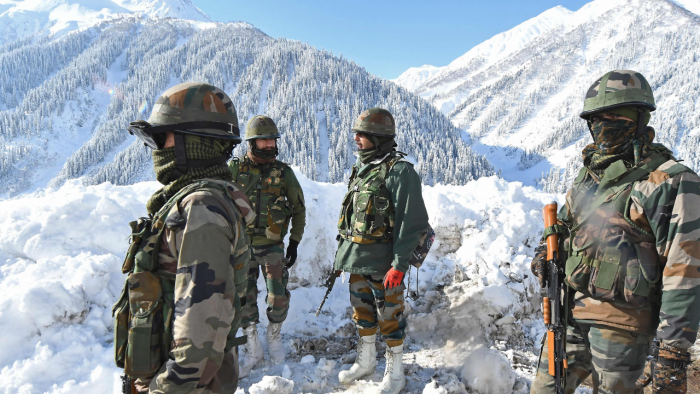
New Delhi: India has redirected at least 50,000 additional troops to its border with China in a historic shift toward an offensive military posture against the world’s second-biggest economy.
Over the past few months, India has moved troops and fighter jet squadrons to three distinct areas along its border with China, according to four people familiar with the matter. All in all, India now has roughly 200,000 troops focused on the border, two of them said, which is an increase of over 40 per cent from last year.
Both the Indian Army and a spokesman for the Prime Minister’s Office didn’t respond to requests for comment.
Whereas previously India’s military presence was aimed at blocking Chinese moves, the redeployment will allow Indian commanders more options to attack and seize territory in China if necessary in a strategy known as “offensive defense,” one of the people said. That includes a lighter footprint involving more helicopters to airlift soldiers from valley to valley along with artillery pieces like the M777 howitzer built by BAE Systems Inc.
While it’s unclear how many troops China has on the border, India detected that the People’s Liberation Army recently moved additional forces from Tibet to the Xinjiang Military Command, which is responsible for patrolling disputed areas along the Himalayas.
China is adding fresh runway buildings, bomb-proof bunkers to house fighter jets and new airfields along the disputed border in Tibet, two of the people said.
Beijing also adding long-range artillery, tanks, rocket regiments and twin-engine fighters in the last few months, they said.
“The current situation on the border between China and India is generally stable, and the two sides are negotiating to resolve relevant border issues,” Chinese Foreign Ministry spokesman Wang Wenbin told a regular press briefing in Beijing on Monday in response to a question about troop deployment.
“In this context, the words, deeds and military deployments of relevant military and political leaders should help ease the situation and increase mutual trust between the two sides, not the other way around.”
The fear now is that a miscalculation could lead to an even deadlier conflict. Several recent rounds of military-diplomatic talks with China have made minimal progress toward a return to the quiet status quo that had prevailed along the border for decades. “Having so many soldiers on either side is risky when border management protocols have broken down,” said D S Hooda, a lieutenant general and former Northern Army commander in India.
“Both sides are likely to patrol the disputed border aggressively. A small local incident could spiral out of control with unintended consequences.”
The northern region of Ladakh — where India and China clashed several times last year — has seen the largest increase in troop levels, three of the people said, with an estimated 20,000 soldiers including those once engaged in anti-terrorism operations against Pakistan now deployed in the area.
The reorientation means India at all times will have more troops acclimatised to fight in the high-altitude Himalayans, while the number of troops solely earmarked for the western border with Pakistan will be reduced. Business Standard


